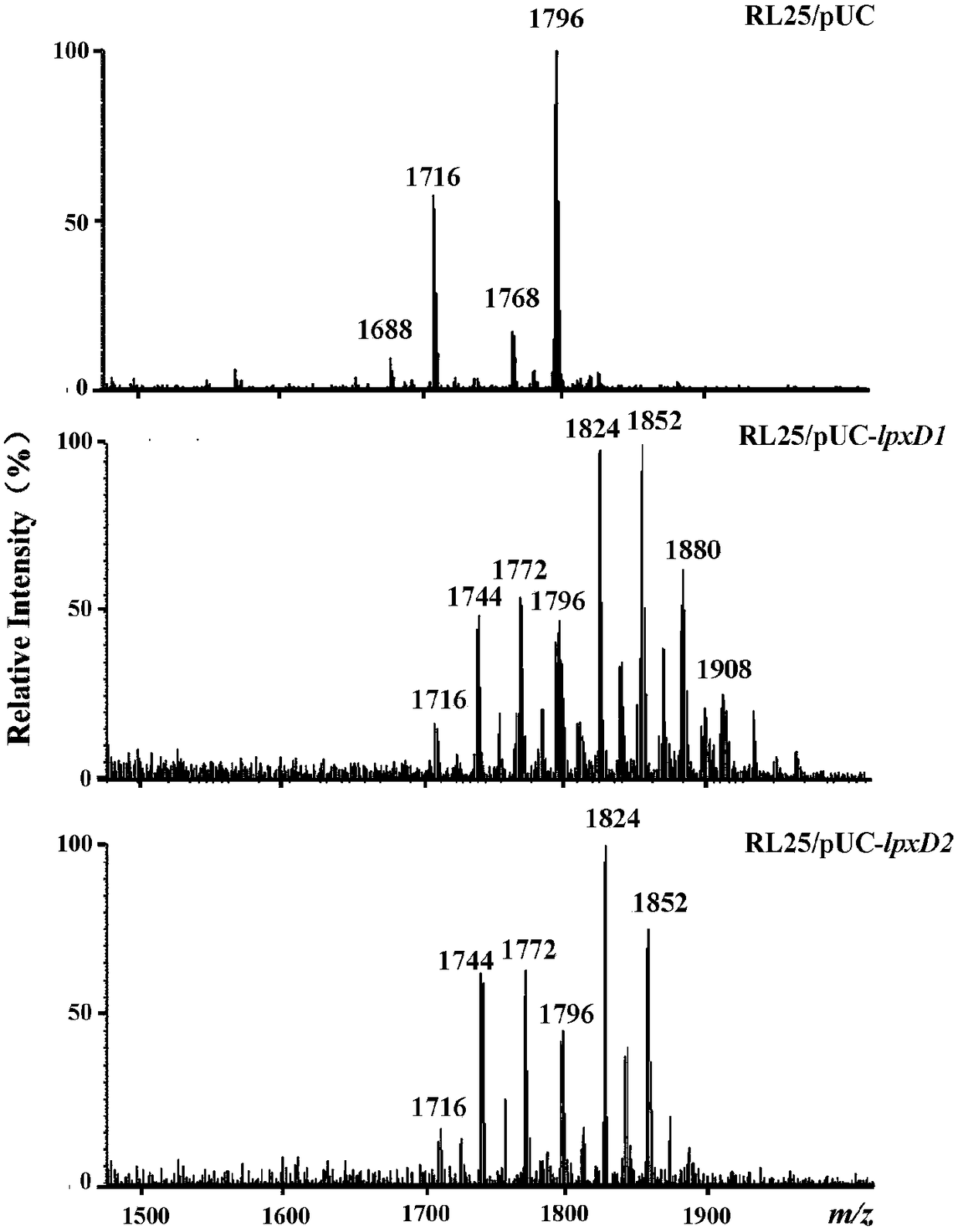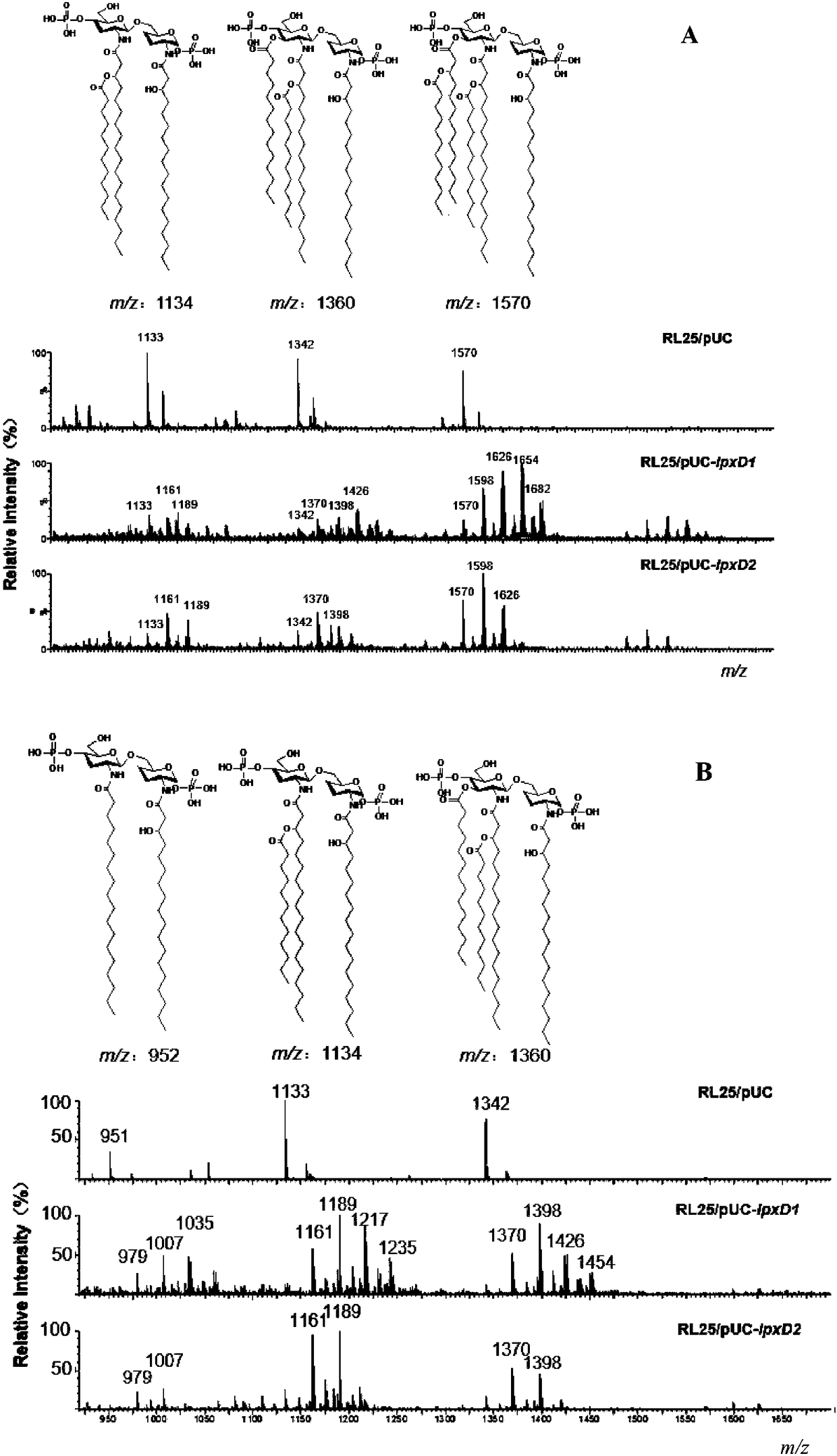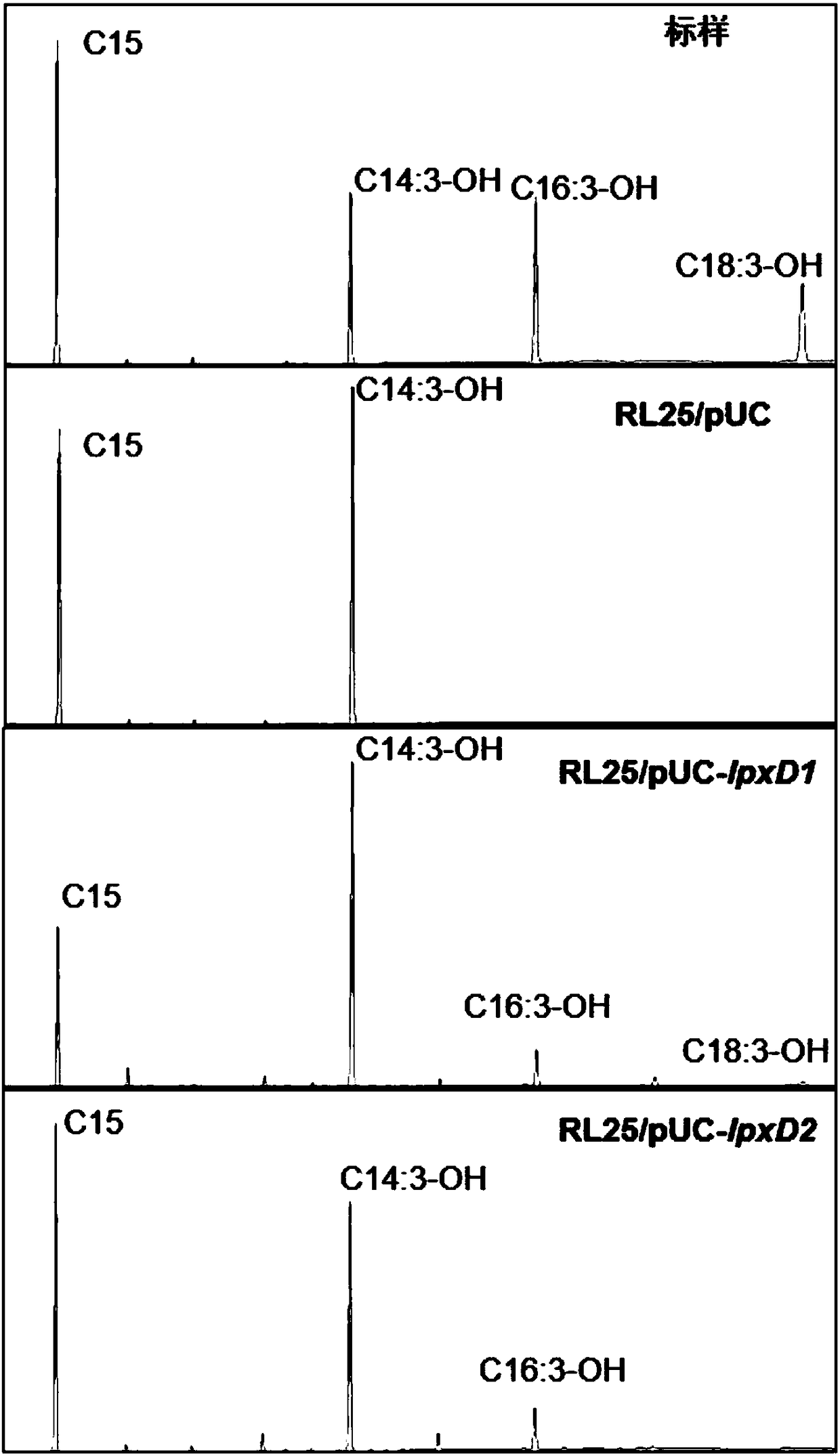Preparation and application of attenuated lipoid A
A technology of gene fragments and recombinant Escherichia coli, which is applied in the field of genetic engineering, can solve problems such as structural damage and complex production processes, and achieve the effects of reducing production processes, easy extraction and preparation, and broadening the scope of clinical applications
- Summary
- Abstract
- Description
- Claims
- Application Information
AI Technical Summary
Problems solved by technology
Method used
Image
Examples
Embodiment 1
[0029] The construction of embodiment 1 genetically engineered bacteria
[0030] Find out the lpxD1 and lpxD2 gene sequences. Select restriction sites according to the nucleotide sequences of lpxD1, lpxD2 and pUC plasmids. Design primers, carry out PCR, and recover lpxD1 and lpxD2 gene expression fragments. The expression gene fragment and the pUC18 plasmid were digested respectively. Ligate the expressed gene fragment and pUC18 plasmid after enzyme digestion. The ligated plasmid was introduced into E.coli RL25 by chemical transformation (for the construction method of E.coli RL25, please refer to the literature: Bartling C M, Raetz CR. Crystal structure and acyl chain selectivity of Escherichia coli LpxD, the N-acyltransferase of lipid Abiosynthesis .Biochemistry, 2009,48(36):8672-8683), W3110 and HW002 (the construction method of E.coli HW002 can be found in literature: Wang X, Zhang C, Shi F, HuX.Purification and characterization of lipopolysaccharides.SubcellularBiochem...
Embodiment 2
[0031] Example 2 Structural Analysis of Genetically Engineered Bacteria E.coli RL25 / pUC-lpxD1 and E.coli RL25 / pUC-lpxD2 Lipid A
[0032] 1. Extraction method of lipid A
[0033] Lipid A was extracted using chloroform / methanol / H 2 O solution mixed phase extraction. The overnight cultured bacterial solution was divided into initial OD 600 =0.02 transferred to 200mL LB liquid medium, cultivated at 37°C to the late logarithmic phase of the bacteria, centrifuged at 4000rpm for 30min to collect the bacteria, ddH 2 After washing the cells once, use Bligh-Dyer one-phase system (chloroform / methanol / water solution, 1:2:0.8, v / v / v) to suspend the cells in 76mL, magnetically stir for 1h, and centrifuge at 2000rpm for 30min to separate the phases. Wash the cell fragments 2-3 times with the system; add 27mL of 12.5mM sodium acetate (PH4.5) solution, ultrasonically shake for 2min, and cleavage the sugar chains in a water bath at 100°C for 30min. After cooling to room temperature, add 30m...
Embodiment 3
[0045] Example 3 Analysis of changes in the self-agglutination ability of genetically engineered bacteria E.coli RL25 / pUC-lpxD1 and E.coli RL25 / pUC-lpxD2
[0046] The overnight cultured bacterial solution was divided into initial OD 600 =0.02 transferred to 50mL LB liquid medium, 37 ° C, 200r / min culture to OD 600 =2; cells were collected by centrifugation, washed once with pH 7.4 phosphate buffer (PBS) and resuspended to control OD 600 = 2; take 10mL into a 15mL centrifuge tube, put it in a 4°C environment, and after 24 hours, take the top bacterial solution to measure the OD, and calculate the OD of the bacterial cell by the calculation method (2-OD600 above the bacterial solution) / 2 self-aggregating ability.
[0047] The result is as Figure 4 As shown, the comparison shows that the autoagglutination ability of E.coli RL25 / pUC-lpxD1 and E.coli RL25 / pUC-lpxD2 is about 2 times higher than that of E.coli RL25.
PUM
 Login to View More
Login to View More Abstract
Description
Claims
Application Information
 Login to View More
Login to View More - R&D Engineer
- R&D Manager
- IP Professional
- Industry Leading Data Capabilities
- Powerful AI technology
- Patent DNA Extraction
Browse by: Latest US Patents, China's latest patents, Technical Efficacy Thesaurus, Application Domain, Technology Topic, Popular Technical Reports.
© 2024 PatSnap. All rights reserved.Legal|Privacy policy|Modern Slavery Act Transparency Statement|Sitemap|About US| Contact US: help@patsnap.com










